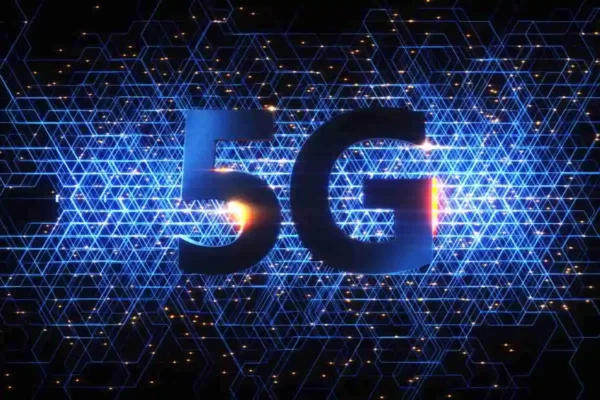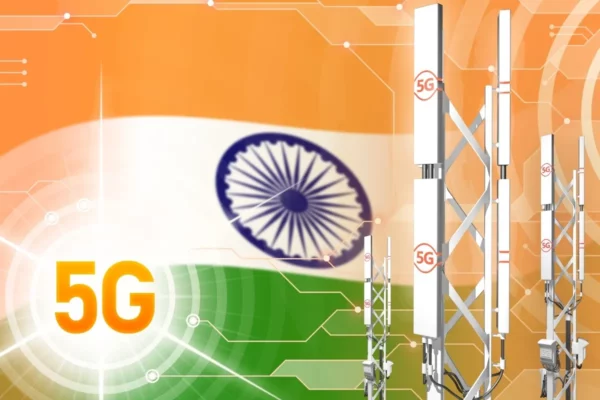How Innovations In 5G Technology Will Revolutionize SaaS Industry?

How Innovations in 5G Technology Will Revolutionize SaaS Industry?
With its rapid transmission speeds, 5G technology is gaining momentum and on its path to taking over enterprises. Grand View Research estimates that by 2022, the market for 5G services will be worth USD 664.75 billion. From 2021 to 2028, this will expand at a rate of 46.2% CAGR. In fact, the research group forecast that 5G will be adopted and that its use would increase across a wide range of industries, including agriculture, retail, and utilities.
Many businesses have already begun incorporating 5G technology into their infrastructure. Today’s businesses rely heavily on data, thus cloud computing is necessary to turn the data into useful information. At this point, the idea of 5G technology is put into action to provide faster connection speeds, which are predicted to be at least 100 times quicker than the current 4G.
Healthcare, BFSI, automotive, education, transportation, and eCommerce are just a few of the industries that will be able to totally alter the business landscape, something that was previously impossible with 4G. In fact, it is predicted that by 2022, there will be over 1 billion 5G connections, and by 2025, there will be 2 billion. According to the GSMA, every second and fifth person would have access to a 5G network.
Any tech or non-tech industry would eagerly anticipate adopting cloud services and 5G technologies in order to compete with the leaders in their respective fields. Leveraging cloud computing and 5G technology offers countless advantages. Businesses will be able to benefit from services like Multi-access Edge Computing (MEC), Mobile Cloud Computing (MCC), and various networking architectures with the impending release of 5G services.
The introduction of 5G services will accelerate the migration of products and services to the cloud, resulting in the eventual commencement of SaaS services.
By concentrating on bringing Fixed Wireless Access (FWA) to rural areas, the government will enable the growth of telemedicine, diagnostics, and home-based care. True digital integration for the large population in the country will be made possible when digital payment networks continue to flourish and program like ONDC expand.
When the 4G rollout first began a few years ago, no one could have predicted the effects it would have on Indian society. India is currently one of the largest consumers of high-quality mobile data thanks to rapid rollout throughout the nation and some of the most affordable data prices globally. Large sectors in entertainment (OTT), banking (fintech and inclusion), and many other use cases have been developed and revolutionized as a result.
Now that 5G is starting to roll out, our nation will probably enter a new paradigm. Increased internet speeds will have a variety of effects on both our personal and professional lives. It will change how services are delivered on the cloud and on our devices and promises up to 20 times quicker speeds than 4G.

Everyone is vying for a piece of the 5G pie, from device manufacturers who anticipate replacing 20% to 30% of mobile devices over the next couple of years to telecom companies whose next phase of growth will be driven by the rollout of 5G services.
The 5G era will accelerate the migration of products and services to the cloud; eventually, services that were previously provided in a variety of offline ways will start to be provided as SaaS.
Where are we now?
In contrast to the rollouts of 3G and 4G, telcos this time are not only dependent on international vendors for equipment and are instead creating their own 5G technology. Jio, for instance, will use a 5G core that was manufactured locally. Reliance and Airtel both claimed to be creating the upcoming 5G stack domestically. Reliance is developing a 5G software stack using its own R&D team and its US subsidiary Radisys, according to a Business Standard article.
O-RAN or Open-Radio Access Networks are new platforms that have aided Indian telecoms in developing their own 5G technology. For instance, Airtel and TCS have partnered to develop a 5G stack and radio based on O-RAN. Tatas purchased a share in Tejas Networks, a company that creates and sells networking hardware including radios, and Teja’s Networks in turn purchased Saankhya Labs, a company that creates 5G software. As a system integrator, TCS will assemble the hardware and software components on an O-RAN platform. Tata’s will be able to test proof of concept, and Airtel will receive innovative technology, so the Airtel-Tata partnership will probably benefit both parties.
It is a challenging task for other domestic telecom equipment businesses to build 5G technology. Last year, the government implemented a PLI program for manufacturers of telecom equipment. Even though the 31 program-approved businesses have committed to investing more than Rs 3,000 crore across 4 years, they do not yet have any contracts from carriers for 5G technology, and hence cannot receive the subsidies within PLI until manufacturing begins.
Few businesses that have designed 5G radios, according to R K Bhatnagar, director general at Voice of Indian Communications Technology Enterprises, do not have orders. According to Bhatnagar, local equipment manufacturers should focus on the private network sector and the rising number of government contracts where the demand for 5G equipment like radios is not as strict or as great.
N K Goyal, who represents the telecom equipment manufacturers association in India, please elaborate. According to Prof. N K Goyal, Chairman Emeritus of TEMA, “Some firms effectively proved indigenous technology that has to be put up in trials.” According to him, private operators gave orders to MNCs due to the impending rollout of 5G.
For India, achieving full indigenous 5G infrastructure and technology is still a long way off. However, 5G has made some technological strides in comparison to 3G or 4G.
Consumer Quantum Leap & Industry 4.0

With the creation of more advanced apps and solutions, there will be a greater emphasis on the development of cloud and network infrastructure. Both corporate and consumer industries will experience service enhancements, new delivery designs, and increased efficiencies, specifically focused on video, AR/VR, and IoT.
Investments in these areas have already begun, and we are currently collaborating with a number of startups to design immersive customer experiences across the consumer technology sector, including gaming, fashion, retail, and healthcare, as well as advancements in industrial automation, manufacturing, and design.
Organizations from all industries are starting to invest in transforming their products and preparing to offer 5G services as they become available. SaaS-based products are being developed more frequently as costs and delivery quality are balanced, as consumers seek convenience and the market develops on-demand, quickly expandable offerings.
Government & 5G
In addition to these solutions, with improved connectivity throughout the nation, we will witness a significant change in how the government delivers healthcare and education services in rural areas and other locations where network connectivity has previously been lacking. Telehealth, diagnostics, and home-based care will all be able to grow as a result of the government’s commitment on bringing Fixed Wireless Access (FWA) to rural centers.
The vast majority of people in our country will soon be able to order goods from a seller in a nearby town as digital payment networks and initiatives like ONDC continue to grow. This is true digital inclusion.
Smart Cities and Smart Homes
For IoT devices to function properly and with low latency, high quality connectivity is essential, which supports the growth of smart cities. This network, which is supported by cloud-based services, will serve as the foundation for the growth of smart cities, a major project of governments all over the world.
Smart homes and wearable technology will experience unprecedented growth among consumers. Since the devices’ communication with the cloud has almost no latency, they won’t need local storage.
Role of telecommunications companies

It is only a matter of time before Telcos start hosting and selling such services since they play a significant role in enabling and supplying high speeds! It will be a really intriguing development if different SaaS solution providers can target their sizable captive consumer base. Edge computing will give devices the tools they need to perform computations locally using distributed clouds, high bandwidth, low latency, data offload, trusted computing, and secure storage.
In order to produce “future ready” and “future necessary” solutions, a large influx of R&D and the beginning of a cycle of investments are being made in the creation of solutions.
Among the emerging situations are:
- Fixed and mobile wireless networks with record-breaking speeds
- Accessibility will be available everywhere in the nation, not just in Tier 1 cities and corporate networks.
- Developers will create complex solutions and offer superior user experiences. — training, medical care, and amusement
- Solutions provided via the cloud
- Telcos and service providers will sell these solutions to their sizable customer base in addition to hosting them.
When you consider all of these possibilities, SaaS is the way of the future, and where there is growth, there will be investments.
edited and proofread by nikita sharma




